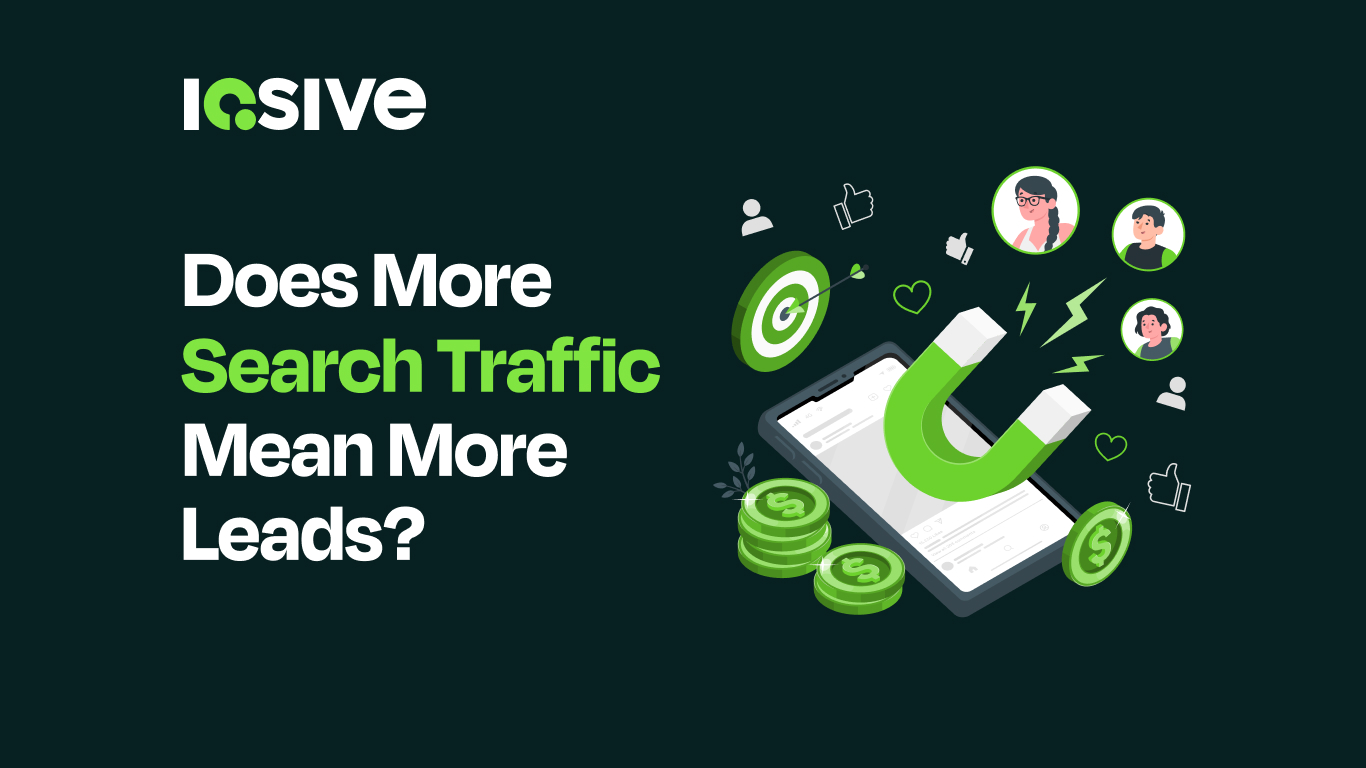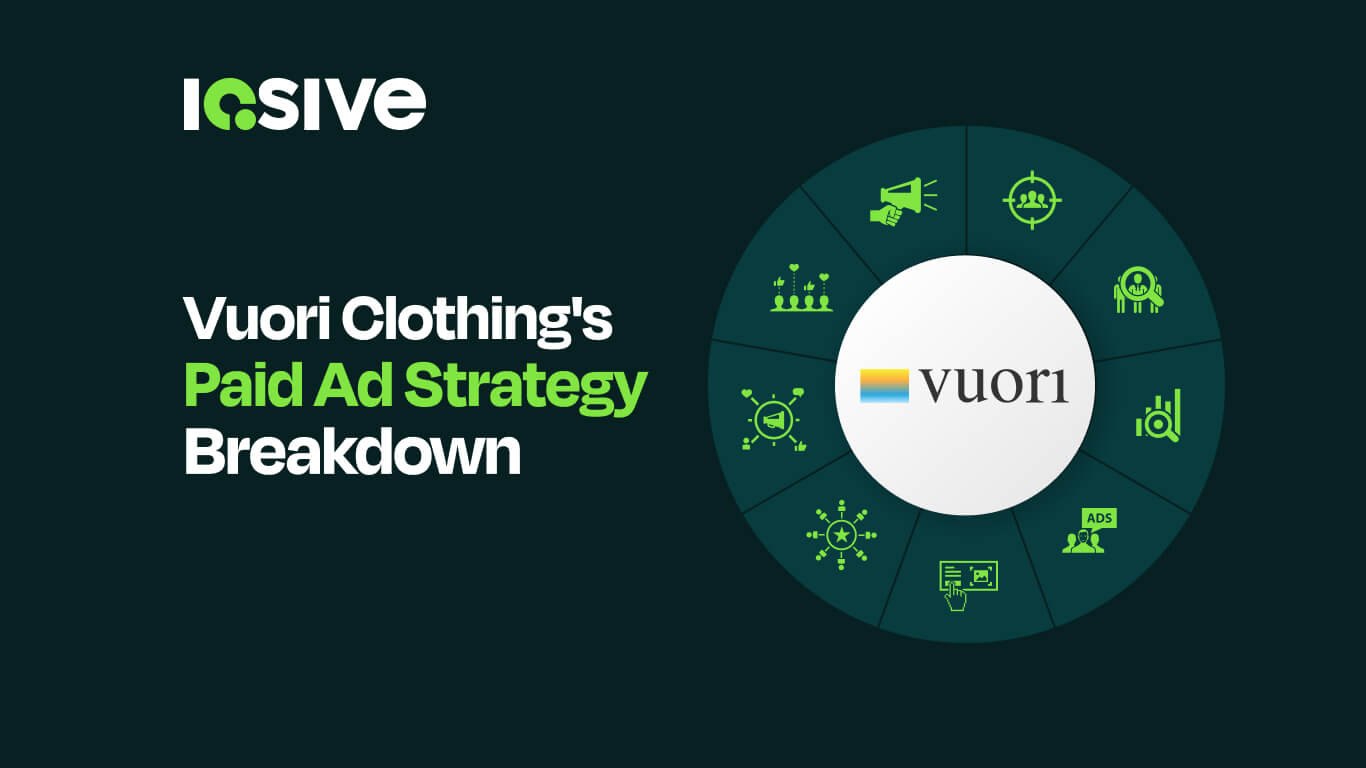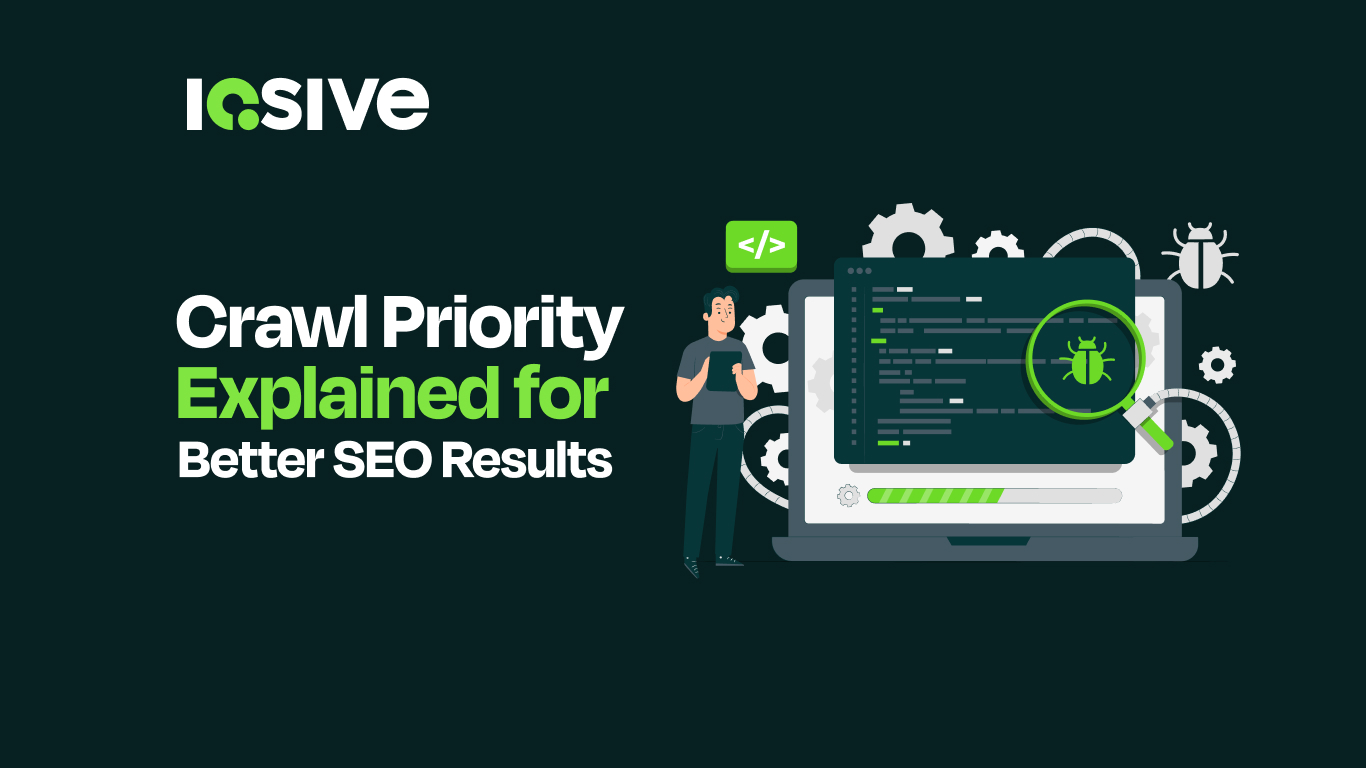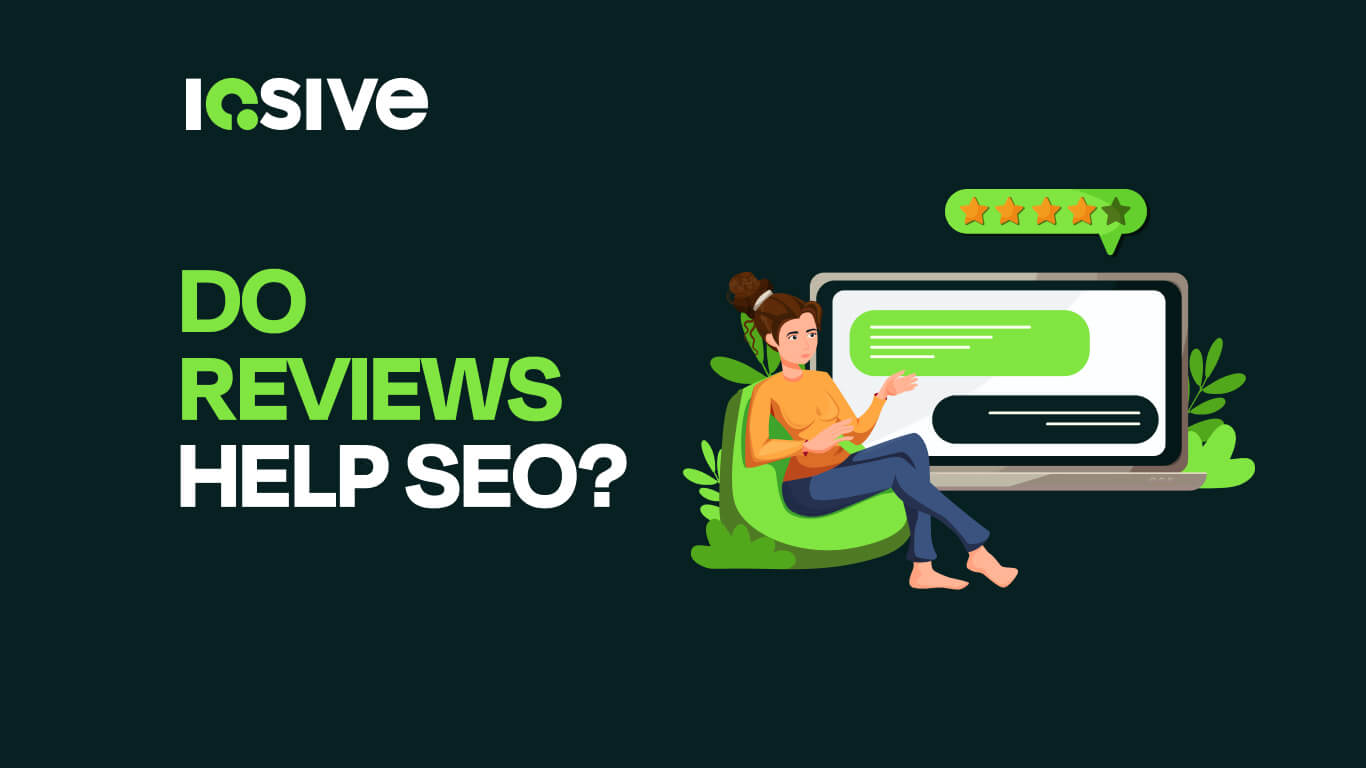Does More Search Traffic Mean More Leads?
Talha Shah

TABLE OF CONTENTS
Driving more search traffic is a common goal for digital marketers and business owners. It’s often assumed that if more people visit your site, you’ll automatically get more leads. But is that truly the case? While traffic growth is important, focusing solely on volume can be misleading. This blog explores the nuanced relationship between traffic and lead generation, uncovering why more traffic doesn’t always equate to more leads and what you can do about it.
Understanding the Relationship Between Traffic and Leads
What Is Search Traffic?
Search traffic refers to visitors who arrive at your website after conducting a query on a search engine like Google or Bing. It can be classified as:
Organic traffic: Visitors who find your site through unpaid search results.
Paid traffic: Visitors who arrive through paid ads like Google Ads.
Search traffic is one of the most valuable acquisition channels because it captures people actively looking for information, products, or solutions.
Defining a Lead in Digital Marketing
A lead is typically a person or organization that expresses interest in your product or service. In digital marketing, leads can take many forms, such as:
- Filling out a contact form
- Downloading a gated asset (like an ebook)
- Subscribing to a newsletter
- Requesting a demo or consultation
Not all leads are created equal, some are just starting their research journey while others are ready to buy.
The Assumption: More Traffic Equals More Leads
The logic seems straightforward: more people visiting your site should lead to more conversions. However, this only holds true if:
- The traffic is highly targeted
- Your site is optimized for conversions
- The visitor’s intent aligns with what you offer
Without those factors, more traffic can simply mean more bounced sessions and wasted marketing spend.
Why More Traffic Doesn’t Always Translate to More Leads
The Problem with Irrelevant Traffic
If your SEO or paid campaigns attract the wrong audience, users who aren’t genuinely interested in your product—conversion rates will plummet. For example, ranking for a high-volume keyword that’s only tangentially related to your offering might boost traffic but yield little to no business value.
Misalignment Between Content and User Intent
Google rewards pages that match search intent. If someone searches for “how to fix a leaking faucet” and lands on a service page trying to sell plumbing tools instead of offering a DIY guide, they’ll likely leave. Even if traffic is high, failure to meet intent leads to poor lead generation.
Poor Conversion Optimization on High-Traffic Pages
Often, websites focus heavily on SEO but neglect conversion rate optimization (CRO). A blog post that brings thousands of visits won’t generate leads if it lacks:
- Strong calls to action (CTAs)
- Trust-building elements (e.g., testimonials, case studies)
- A clear next step
Key Metrics to Evaluate Lead-Generating Traffic
Bounce Rate and Session Duration
Bounce Rate: The percentage of visitors who leave after viewing only one page. A high bounce rate on a landing page can indicate a disconnect between content and user expectations.
Session Duration: How long users stay on your site. Longer durations often reflect deeper engagement, which increases the chance of conversion.
Conversion Rate by Traffic Source
Analyzing how different traffic sources convert is critical. For example:
- Organic traffic may convert better than social traffic
- Visitors from branded queries often show stronger intent
Tracking conversion rates by source helps you focus efforts where they matter most.
Lead Quality vs. Lead Quantity
More leads are only better if they’re qualified, meaning they fit your ideal customer profile and are more likely to convert into paying customers. Tools like lead scoring can help assess this.
Targeting the Right Traffic for Higher Lead Conversion
Importance of Intent-Driven Keywords
Rather than chasing keywords with the highest search volume, prioritize high-intent keywords. For instance, “buy CRM software” is more valuable than “what is CRM” when your goal is lead generation.
Use tools like Google Keyword Planner, Ahrefs, or Semrush to evaluate:
- Keyword intent
- Cost-per-click (CPC)
- Competition level
Segmenting Branded vs. Non-Branded Traffic
- Branded traffic comes from users already familiar with your company. It often converts at higher rates.
- Non-branded traffic includes people unfamiliar with your brand. While harder to convert, it’s essential for growth.
Each type of traffic requires a different strategy for engagement and conversion.
Optimizing for Buyer Journey Stages
Map content and offers to each stage of the buyer’s journey:
- Top of Funnel (Awareness): Blog posts, guides
- Middle of Funnel (Consideration): Webinars, comparison pages
- Bottom of Funnel (Decision): Case studies, free trials
Tailoring CTAs and landing pages to user intent dramatically boosts lead generation.
Strategies to Turn Traffic into Qualified Leads
Crafting High-Converting Landing Pages
A great landing page should:
- Focus on a single, clear offer
- Be visually clean and fast-loading
- Include trust signals like reviews or certifications
- Use compelling copy that speaks directly to the target audience
- A/B testing different layouts, copy, and offers can uncover what works best.
Using Clear and Compelling CTAs
CTAs guide users toward conversion. Best practices include:
- Action-oriented language: “Download the Guide,” “Start Your Free Trial”
- Prominent placement on the page
- Offering value in exchange for contact info
- Avoid generic CTAs like “Click Here.” Instead, make the benefit clear.
Implementing A/B Testing for Conversion Improvements
Testing variations of headlines, images, CTAs, and form lengths helps optimize your funnel. Use tools like Optimizely, Google Optimize, or VWO to run structured tests and base changes on data, not assumptions.
Tools to Track and Improve Traffic-to-Lead Performance
Google Analytics and Goal Tracking
Use Google Analytics 4 (GA4) to:
- Track user flow across pages
- Set up Goals for form submissions, downloads, and button clicks
- Analyze behavioral trends across different devices
- Proper configuration is key to understanding what’s working.
CRM and Marketing Automation Integration
Platforms like HubSpot, Salesforce, and Zoho let you:
- Capture leads directly from your site
- Nurture them through email workflows
- Score and segment leads for sales follow-up
This integration connects marketing activities to actual revenue outcomes.
Heatmaps and User Behavior Analysis
Tools like Hotjar or Crazy Egg reveal how users interact with your site:
- Where they click
- How far they scroll
- Which elements they ignore
This helps identify friction points and refine UX to support lead conversion.
Final Thoughts: Quality Over Quantity in Search Traffic
More traffic only leads to more business if that traffic is qualified, relevant, and well-nurtured. Instead of obsessing over pageviews, focus on:
- Aligning content with user intent
- Optimizing your site for conversions
- Using data to guide continuous improvement
Ultimately, quality beats quantity when it comes to generating leads from search traffic. A focused, user-first strategy will always outperform a volume-driven approach.
FAQ:
Does higher website traffic guarantee more sales leads?
No, high traffic doesn’t guarantee more leads unless the traffic is relevant and aligned with user intent and conversion strategy.
What kind of traffic is most likely to generate leads?
Traffic from intent-driven searches, especially branded and long-tail keyword queries, tends to convert best into leads.
How do I identify if my traffic is converting into leads?
Use tools like Google Analytics and CRM integrations to track conversions, form submissions, and user behavior across your site.
What’s the difference between organic traffic and qualified leads?
Organic traffic refers to all users from search engines, while qualified leads are those who meet your buyer criteria and are likely to convert.
Why is user intent crucial in converting traffic to leads?
Because aligning your content with what users are actually looking for increases engagement and conversion potential significantly.
How can I improve conversion rates without increasing traffic?
By optimizing your CTAs, landing pages, and user experience. Focus on better targeting, clearer messaging, and CRO techniques.
What tools help analyze lead generation from search traffic?
Google Analytics, HubSpot, Salesforce, Hotjar, and Ahrefs all offer data to assess traffic quality, conversion rates, and user journeys.
Can low-traffic websites still generate high-quality leads?
Yes, if the traffic is highly targeted and the site is well-optimized for conversion, even small volumes can yield excellent leads.











